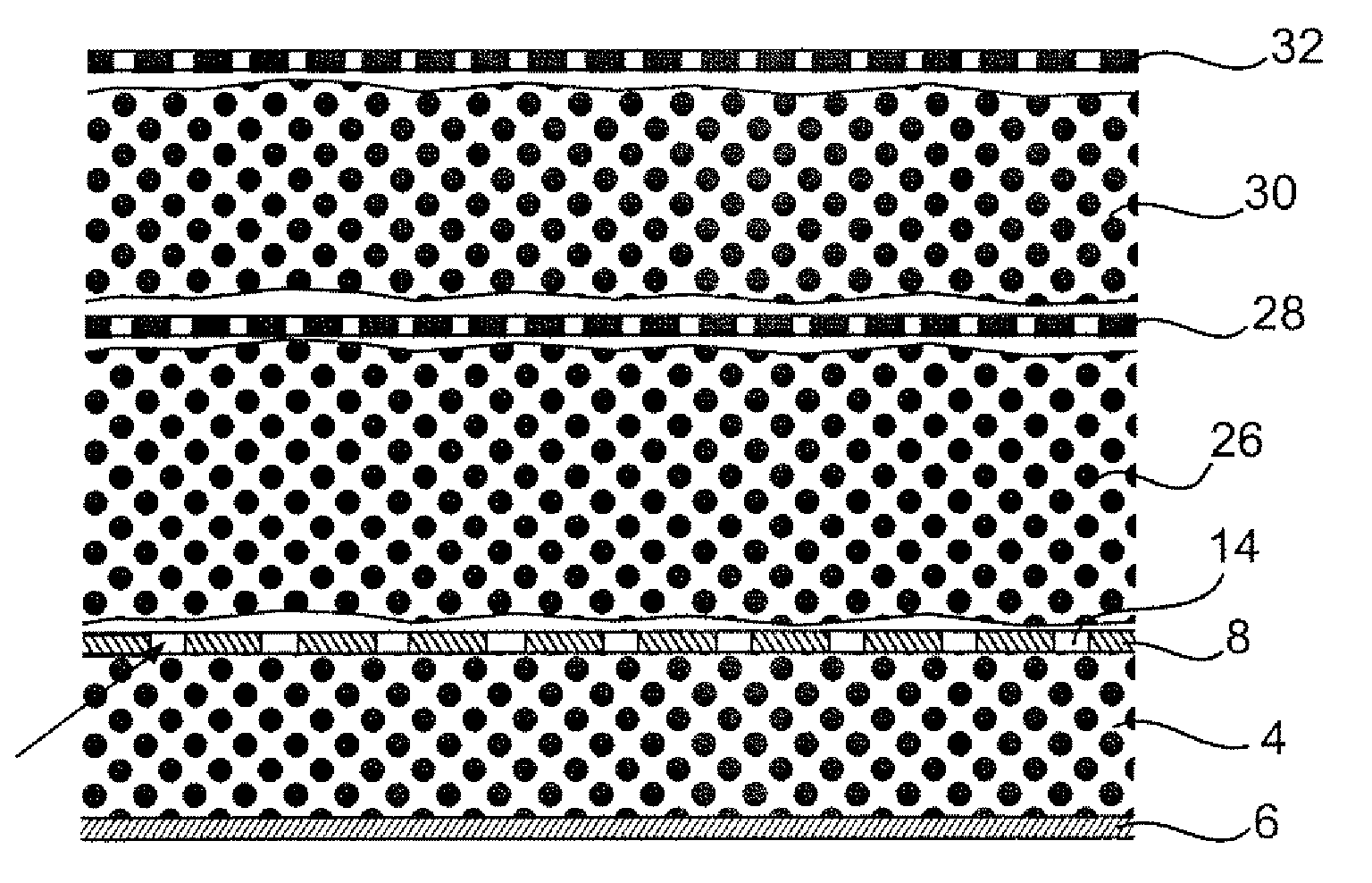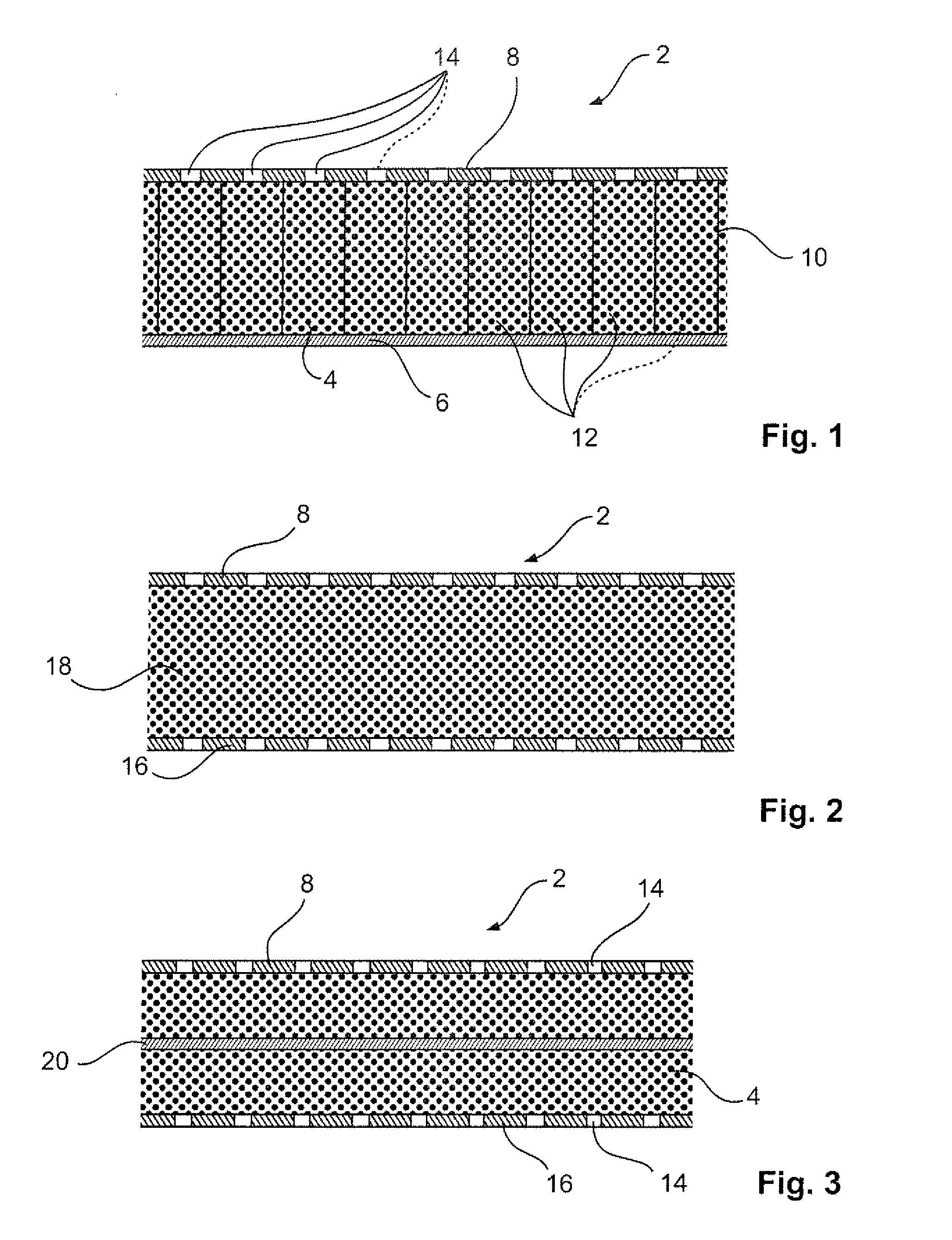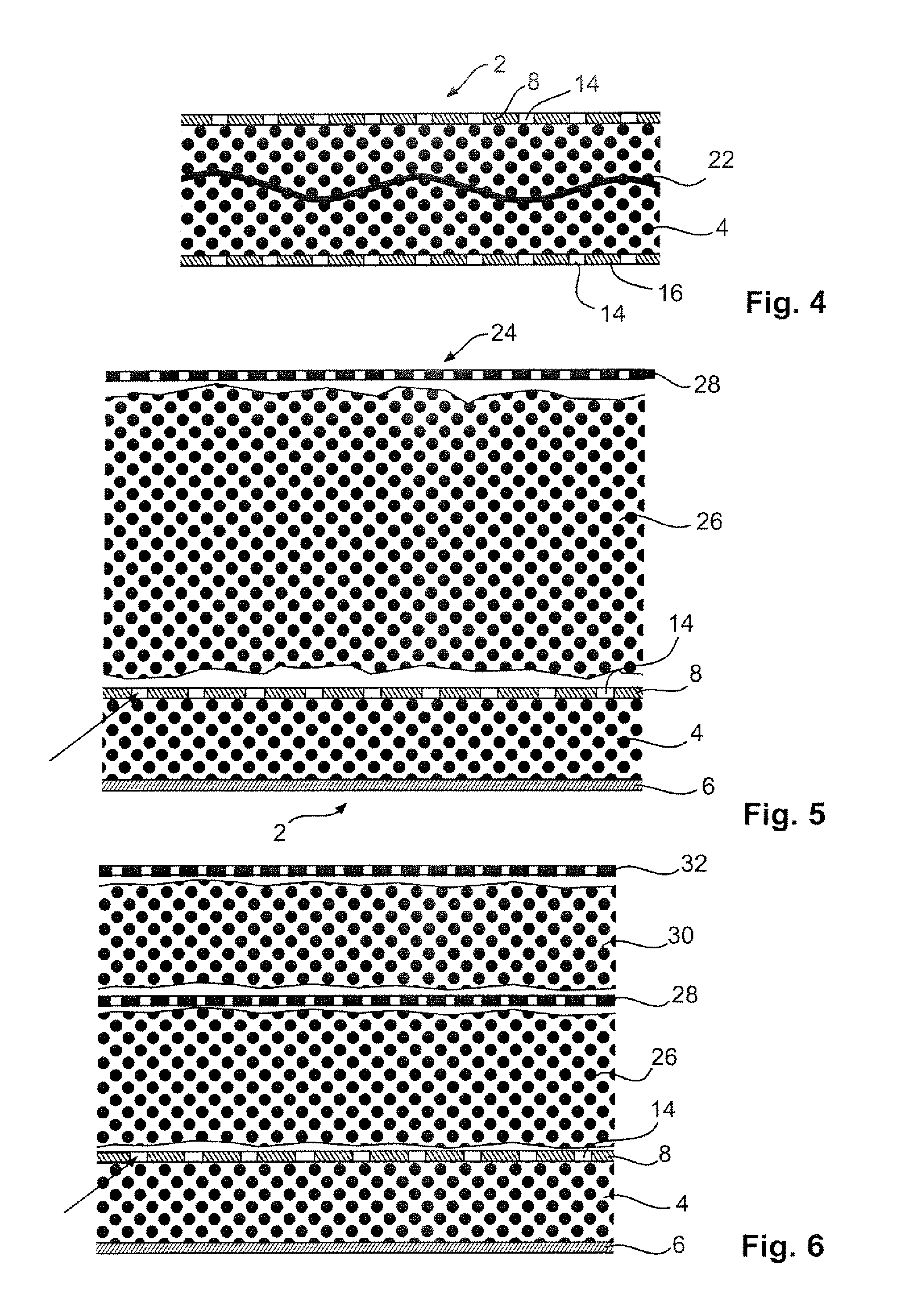Acoustically optimized cabin wall element
a cabin wall and acoustic optimization technology, applied in the direction of instruments, transportation and packaging, synthetic resin layered products, etc., can solve the problems of significant and unacceptable addition weight of the overall cabin, poor sound insulation characteristics in relation to engine noise, and measures alone do not achieve the desired good sound reduction characteristics, so as to improve the acoustic absorption capacity of the cabin wall, improve the sound insulation, and improve the effect of cabin wall acoustic absorption
- Summary
- Abstract
- Description
- Claims
- Application Information
AI Technical Summary
Benefits of technology
Problems solved by technology
Method used
Image
Examples
Embodiment Construction
[0023]FIG. 1 shows a simple basic design of the sandwich element 2 according to the invention, which sandwich element 2 comprises a honeycomb core 4, a bottom cover layer 6 and a top cover layer 8. In this example the core layer 4 is designed as a honeycomb structure, which for improved sound absorption could additionally comprise sound-absorbent material. This material could, for example, be open-pore or open-cell material, e.g. glass wool or foam material that has been placed between the walls 10 of the individual honeycomb cells 12, wherein the glass wool may, for example, have been placed into the honeycomb 12, either pressed in the form of a non-woven glass fabric with a high binding-agent content, or non-pressed.
[0024]The material of the walls 10 of the honeycomb cells 12 could be made from an aramide fibre material, in particular a meta-aramide material; a semi-finished product that is also known by the name of “Nomex® paper”. Such a honeycomb structure by itself does not pro...
PUM
| Property | Measurement | Unit |
|---|---|---|
| diameter | aaaaa | aaaaa |
| diameter | aaaaa | aaaaa |
| frequency | aaaaa | aaaaa |
Abstract
Description
Claims
Application Information
 Login to View More
Login to View More - R&D
- Intellectual Property
- Life Sciences
- Materials
- Tech Scout
- Unparalleled Data Quality
- Higher Quality Content
- 60% Fewer Hallucinations
Browse by: Latest US Patents, China's latest patents, Technical Efficacy Thesaurus, Application Domain, Technology Topic, Popular Technical Reports.
© 2025 PatSnap. All rights reserved.Legal|Privacy policy|Modern Slavery Act Transparency Statement|Sitemap|About US| Contact US: help@patsnap.com



